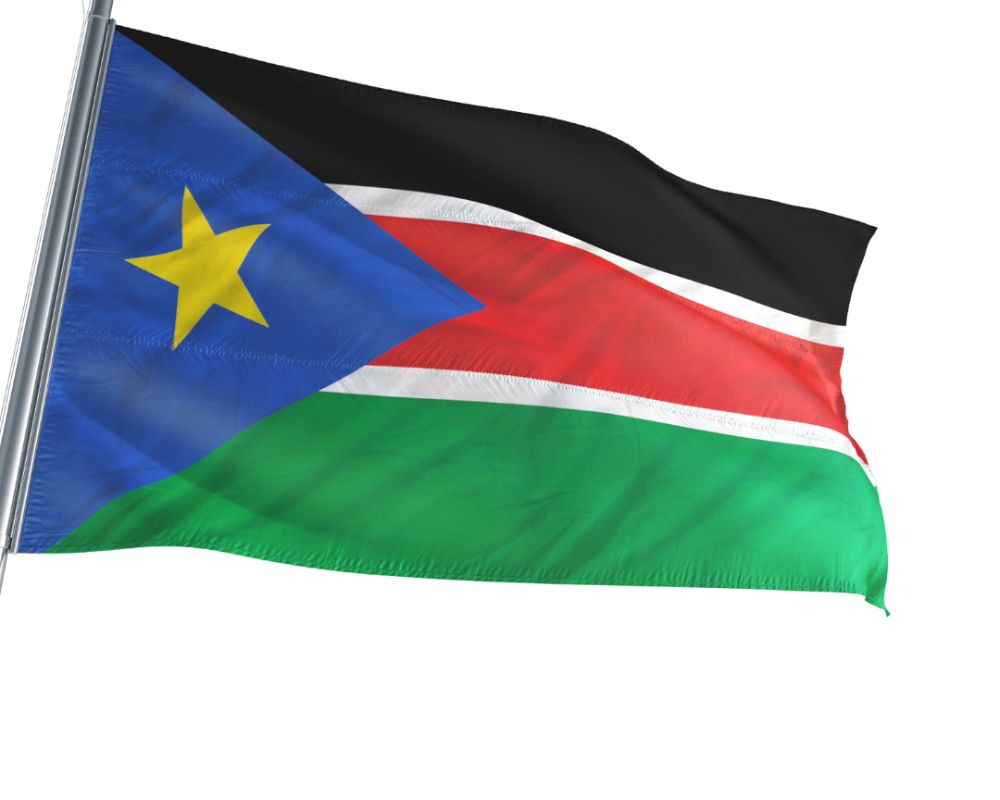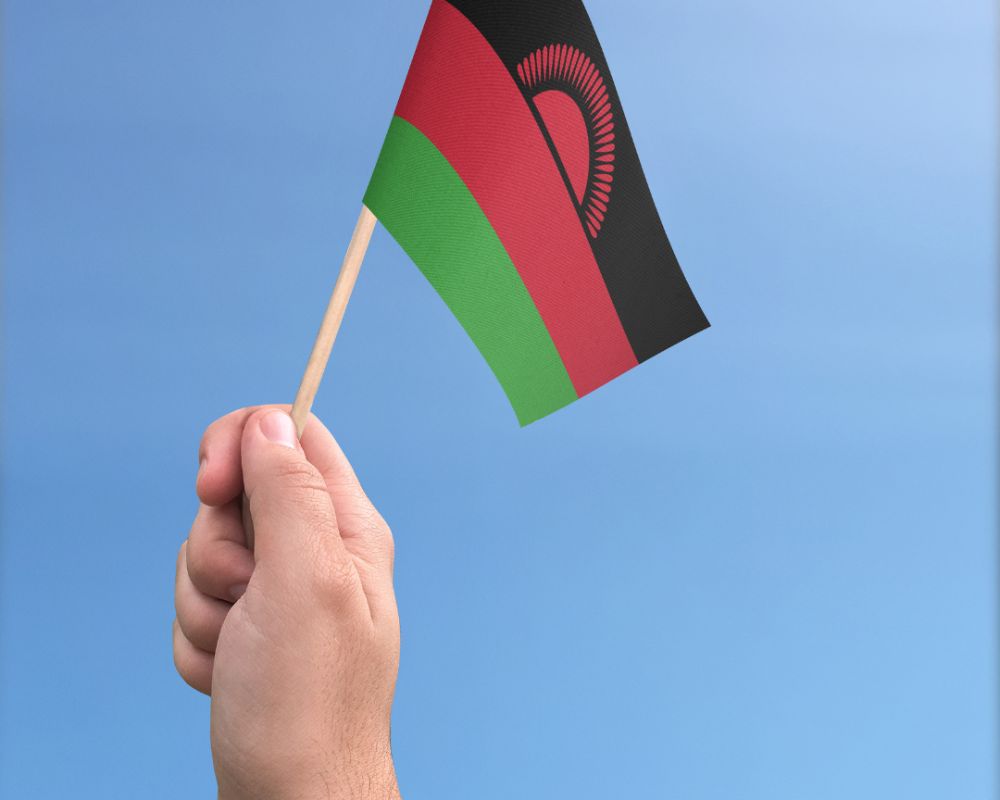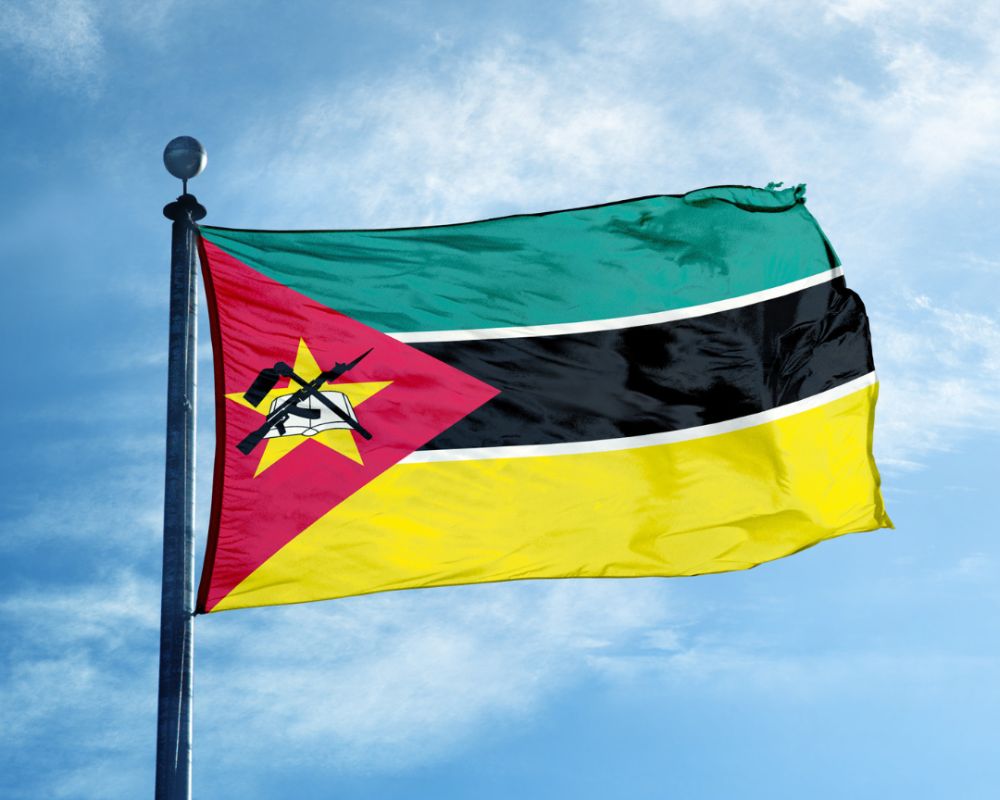
The Sustainable Development Goals (SDGs) are working towards poverty eradication by setting out internationally agreed upon targets for ending poverty in all its forms. The first explicit target, goal 1.1, reads “By 2030, eradicate extreme poverty for all people everywhere, currently measured as people living on less than $1.25 a day.” This goal is further supported by all the other SDG targets that aim to help individuals access health, education, employment opportunities and other requirements for long term financial security. This interweaving of goals and targets ensures that the SDGs are working together to ensure that each person has the resources and opportunities to build a resilient life that is free from poverty. Additionally, there are several indicators that measure progress to ensure that the goals can be achieved. By taking this approach to eradicating poverty, the SDGs are cementing a socially just, sustainably prosperous, and inclusive world.
International assistance is provided to the poorest countries in the form of financial assistance, grants, loans, debt relief, technical assistance, and other forms of support. Financial assistance is typically directed towards reinforcing local economies and providing essential services in the poorest countries. Grants and loans are directed to help build infrastructure, create jobs, improve access to health care, and support rural and agricultural development. Debt relief is also available to help increase access to credit and provide liquidity to the local economy. Technical assistance is provided to help the poorest countries improve their capacity to design and implement essential policies relating to economic growth, poverty reduction, and human development. Other forms of assistance may include direct investment, trade promotional activities, and support for activities such as tourism. Ultimately, international assistance to the poorest countries is created to foster their economic and social growth.
Poverty is a major contributor to hunger and food insecurity in impoverished nations. It often means that families cannot afford healthy and nutritious food and, therefore, rely on whatever food sources are available. Poverty may also lead to displacement, which makes it difficult for families to find places to buy food or grow their own crops. Additionally, climate change—which is often exacerbated by poverty—results in severe droughts or flooding that can destroy crops and livestock, leading to food insecurity. Poor infrastructure in impoverished nations can exacerbate these effects, as it can prevent or delay the delivery of food and resources. Poor nutrition due to lack of access to fresh and nutritious food is also a result of poverty and can lead to long-term health problems. In summary, poverty has a major impact on hunger and food security in impoverished nations as it can limit access to and the quality of food available.
The poorest countries face a variety of challenges when it comes to providing access to healthcare. The lack of financing and resources is a major issue, as medical services require both monetary and personnel investments. In many countries, there is also a lack of infrastructure, which creates difficulties in reaching remote areas and providing the necessary medical supplies and equipment. Additionally, the training of human resources, such as doctors and nurses, is often limited or nonexistent. Poor countries can also suffer from corruption, which may lead to misallocation and diversion of resources intended for health services. Lastly, cultural stigmas and traditional beliefs can have a direct impact on behavior and overall health outcomes, making it harder to improve the healthcare system and increase access to services.
Colonialism had a profoundly negative effect on poverty levels in colonized countries. Colonizers took natural resources from these countries to use for their own economic and industrial purposes, leading to poverty and inequality. This extraction of wealth led to a lack of development for the colonized countries, which created the poverty gap that many of these countries still face today. In addition, colonialism often led to oppressive labor practices. People were taken from their homes and put to work in the industries of the colonizers, often without any wages or rights. This led to widespread poverty and exploitation, with much of the population unable to sustain their basic needs. Colonialism also created unequal access to education, health care, and other social services, leaving many in poverty with no real way out. As a result, the poverty levels of many colonized countries have been significantly affected by colonialism, with many of these same countries remaining among the most impoverished in the world today.
Corruption hinders poverty reduction efforts in certain nations by decreasing government trust, disrupting the functioning of legal mercantile endeavors, and diverting resources away from essential public services. Government trust is vital to any society, and when it is lost due to corruption, citizens become less likely to participate in economic development, leading to a reduced tax base and fewer resources for public services. When the legal mercantile system fails to function effectively due to bribery, kickbacks, and other illegal activities, businesses can no longer reliably obtain goods, services, and labor, resulting in unprofitable enterprise operations and reduced economic growth. Finally, predatory corruption siphons off resources from essential services like healthcare, education, and infrastructure, ultimately hampering poverty reduction efforts.
The debt burden of poor countries is an immense challenge for sustainable economic growth. Poor countries in general owe large amounts of money to external lenders, and the vast majority of these countries spend a significant portion of their annual budgets on interest payments and principal repayment of these debts. As a result, these countries often have fewer resources available for investment in public services, infrastructure, and human capital development. This can have a devastating long-term impact on development in these countries. In addition, resource misallocation to debt repayment can place additional strain on poor and vulnerable households due to reduced access to credit and increased risk of poverty. The burden of debt can also create an environment of macroeconomic instability due to large borrowing costs and risk of sovereign default, which can also impede sustainable economic development.
In order to empower women in impoverished societies, many initiatives have been put in place. These can involve increasing access to education and economic opportunities, increasing women’s access to land and resources, improving healthcare, providing skills training and financial literacy, creating legislation to protect women’s rights, and raising awareness about gender-based violence. Programs such as microfinance, access to credit, and job-training are also important in helping women gain economic independence. Community-based organizations, NGO’s, and international organizations are also key in putting in place policies, gathering resources, raising awareness, and helping to create long-term change. With these initiatives, women in impoverished societies all over the world can build better lives, strengthen their communities, and have a better future.
Migration has been shown to have both positive and negative impacts on poverty levels, depending on the context. In source countries, the key variable is how emigration affects the economic activity of the country. On the one hand, the departure of the labor force in source countries can lead to decreased job opportunities, reduced economic growth, and additional strain on social services. On the other hand, migrants often send remittances back to the family members they left behind, which helps to support consumption and investment in the home country. In destinatino countries, migration can reduce poverty levels by providing additional labor and skills which help fuel growth and investment. At the same time, in countries with a less structured immigration system, large influxes of migrants often create an influx of low-paid labor, leading to increased economic inequality and poverty. Overall, the extent to which migration impacts poverty levels is highly context-specific, and depends largely on how migration is managed and regulated by both source and destination countries.

A country is generally considered to be one of the poorest in the world when the majority of its population lives in poverty, struggling to access basic needs such as food, medicine, sanitation, and education. In addition, a country can be deemed one of the poorest in the world when its Gross Domestic Product (GDP) per capita is considerably low in comparison to other countries, leading to far fewer resources. Moreover, a lack of employment opportunities, reliable infrastructure, and resources to suitably grow a stable economy can also contribute to a nation being considered one of the poorest in the world.
Poverty is measured on a global scale using an index known as the 'international poverty line'. This line is determined by the World Bank and is based on the purchasing power of a person's daily income. The index sets a line at 1.90 USD per day, which divides the world's population into those above and below the poverty line. This line is used to measure the number of people living in extreme poverty (under the poverty line) as a percentage of total population. The international poverty line also allows for comparisons between different countries, helping to identify and assess the magnitude of poverty around the world.
The countries with the highest poverty rates in the world are Niger, Liberia, Central African Republic, Burundi, and Malawi. These countries have poverty rates of over 40%. Niger and Liberia have the highest poverty rates in the world at around 67% and 57% respectively. The poverty rates in these countries are driven by a combination of weak economic growth, weak education systems, and poor governance. Many of these countries also suffer from high levels of inequality, with the majority of wealth concentrated among a small number of individuals. In addition, many of these countries also lack access to essential services such as healthcare, and have limited access to modern economic opportunities.
The main causes of extreme poverty in developing nations are complex and vary from country to country, but generally include a lack of access to resources such as infrastructure, education, and health care; weak or nonexistent social safety nets; government corruption; and unfavorable social and economic conditions. In many cases, the presence of civil war, armed conflicts, and diseases like HIV/AIDS also contribute to poverty levels. In some countries, climate change has made existing levels of poverty even more extreme. Additionally, dysfunctional or corrupt governments and state actors can create poverty by deliberately creating economic systems that limit access to resources, especially for the poorest citizens. All of these factors can come together to create an environment where poverty is persistent and widespread.
Income inequality can have a dramatic effect on poverty in different countries, both in terms of its severity and its persistence. Income inequality increases the poverty rate in a country by creating bigger gaps between the haves and have-nots, and making it harder for those at the bottom to make ends meet. It also helps to maintain these gaps since those at the top have greater resources to maintain their position within the economy, while those at the bottom have fewer resources to invest in their own economic well-being, leading to greater poverty. Income inequality also affects poverty by reducing the ability of those at the bottom to access government services such as healthcare, education, and other social programs that can help them to break free from the cycle of poverty.
The challenges of economic development in the world's poorest countries are numerous and complex. Poor countries often lack adequate infrastructure, investment capital, technology, and education—all of which are essential for economic growth. Poor countries also tend to be hindered by political instability, corruption, and insecurity, further impeding their economic development.Government instability can lead to a volatile and, in some cases, an unstable investment and business climate. Corruption, nepotism and cronyism create an environment with an unequal playing field, drawing resources away from economic development and entrepreneurship. In addition, these countries are disproportionately burdened with external debt, with developing countries across the globe spending an amount of money relative to their GDP on debt repayment that is several times higher than that of more developed countries. This leaves little room for investment in economic development. Last but not least, many of these countries are prone to natural disasters, which can have a severe impact on their local economies, infrastructure, public services, health and sanitation—all of which are critical for economic growth.


One successful poverty alleviation strategy that has been implemented globally is micro-finance initiatives. With micro-finance initiatives, individuals and families are provided with access to small loans and other financial services. This is done in order to help them generate income, create jobs, and build wealth. This has been extremely successful in helping low-income families and individuals establish a sense of financial security and help them break out of poverty. Another strategy that has been successful in fighting poverty is providing basic education and skills training to those who are living in poverty. Access to education can provide essential skills necessary to support employment and break the cycle of poverty. Education is essential to providing more legitimate and legal opportunities, which is why it is so important in helping fight poverty. Finally, investing in improved infrastructure, creating jobs, and providing access to healthcare have been successful strategies implemented around the world. Improving infrastructure helps to provide greater access to goods, services, and opportunities, while creating jobs and increasing access to healthcare helps to build more long-term security for individuals living in poverty.
Poverty heavily affects access to education in low-income nations, due to limited resources and funds being spread over a large population. Often, children must work to help support their families, leaving little or no time to attend school or receive an education. Without education, it is much more difficult for those affected to escape poverty and improve their situations. Poverty also affects the quality of education that is available. Low-income nations often have limited resources and resources tend to be allocated disproportionately, which means schools and teachers in poorer areas are not able to provide students with the same quality of education as those in more affluent areas. Low-income nations also face budget deficits, resulting in limited funds available for growing and improving education systems. As a result of these issues, poverty often limits access to high quality education and creates an educational playing field that denies some youths the opportunity to realize their potential.
People living in impoverished regions are often exposed to a variety of health issues that are much less common in wealthier countries. These issues range from limited access to clean water, inadequate sanitation, and poor nutrition, to the inability to prevent the spread of infectious diseases such as measles, malaria, and HIV. Poor nutrition, often resulting from limited access to enough food or resources to prepare healthy meals, can lead to serious health consequences, such as anaemia, stunted growth in children, and even death. Another major health issue for people living in impoverished regions is a lack of access to healthcare services, which can mean that any illnesses or injuries they suffer are left untreated, often leading to further complications. Finally, people living in poverty are more likely to experience mental illnesses such as depression, anxiety, and post-traumatic stress, sometimes due to experiences of violence and exploitation.
Many poor countries struggle with inadequate infrastructure due to limited resources, economic development, and a lack of political commitment to infrastructure. Poor countries often lack the resources to dedicate sufficient funds to developing and maintaining infrastructure, leading to under-investment in roads, rails, bridges, air and water transportation, and energy systems. Additionally, economic development is often hindered due to a lack of infrastructure, trapping countries in a catch-22 of struggling to develop the economy without the resources to do so. Furthermore, there is often a disconnect between the government that allocates resources and the citizens who suffer without them, which results in a lack of political will to invest in infrastructure. This cycle of poverty can be difficult to break, and is why many poor countries struggle with inadequate infrastructure.
Humanitarian aid plays a critical role in supporting the poorest countries in the world. It provides much needed assistance to those living in extreme poverty, struggling with hunger and malnutrition, or impacted by natural disasters or conflict. It allows governments and other organizations to assist and protect vulnerable populations, providing resources to help them survive and thrive. Humanitarian aid can come in many forms, from basic food and medical supplies to specialized healthcare and educational programs. It also supports nations in rebuilding their infrastructure and helping their economies to grow. In these ways, humanitarian aid helps nations out of poverty by providing essential resources and helping them develop a sustainable, prosperous future.
Yes, there are effective social welfare programs in place in developing nations. Such programs have become increasingly necessary in light of rising poverty rates in many nations around the world. Social welfare programs can include food, health care, shelter, job training, education, and other basic needs. Depending on the country, these programs may be funded by the government, charity organizations, or even private individuals. These programs can play a key role in helping people who are struggling to make ends meet or are subject to extreme poverty. Through targeted, effective social welfare programs, many developing nations are able to provide vital services that improve the quality of life for their citizens.
A1. Access to clean water in poor countries can be improved by implementing sustainable water management practices, investing in water infrastructure, improving the delivery and quality of water services, providing safe water and sanitation facilities, and educating the population on the importance of safe water and hygiene practices.
A2. Without access to clean water, there would be a variety of long-term implications for poor countries. These include increased risk of water-borne illnesses and diseases, decreased farming productivity due to lack of irrigation, malnutrition due to water-related illnesses, increased poverty as a result of economic losses due to water-related problems, and strained resources due to water shortages.
A3. To ensure access to clean water in poor countries, measures should include investing in water infrastructure, introducing water services that are reliable and affordable, implementing sustainable water management practices, providing safe water and sanitation facilities, educating the population on the importance of safe water and hygiene practices, and devising long-term plans to ensure water security.